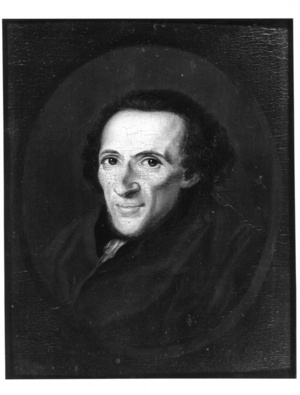In Mark Twain’s novel The Adventures of Huckleberry Finn, Jim is a slave who is fleeing the south during the antebellum period. After being found by Huckleberry Finn, the protagonist of the novel, Jim travels up the Mississippi River from Jackson Island. The novel continues with the pair as they flee their problems at home, depending on each other for survival as they encounter various obstacles that jeopardize their freedom. As a black runaway slave in the antebellum south, Jim faces discrimination based on the color of his skin. Throughout the novel, Mark Twain both reinforces and challenges racist stereotypes. Twain characterizes Jim as a sincere yet naive character, representing the runaway slave as a fatherly figure who maintains his integrity as being one of the sole characters of the novel who wouldn’t be described as hypocritical, despite the fact that Jim also retains a childlike mentality.
Mark Twain allows Jim to break racist stereotypes by showing more human qualities of him. In the antebellum period, blacks were not generally considered human beings. When first told that a small explosion on board of the boat had killed a slave, Tom Sawyer’s Aunt Sally supports racist stereotypes by saying “it’s lucky; because sometimes people do get hurt” (Twain 263), effectively negating any concern for a black man that she believes was accidentally killed. Because Aunt Sally did not see the black man as a person, it was okay that he was killed by the blast, whereas a white man or child would have drawn alarm at the same news.
Jim is also able to break away from racist stereotypes by assuming a role as a father figure to Huck, who he watches over throughout the bulk of the novel. Jim protects Huck by shielding his view from the dead body that turned out to be Huck’s father Pap. This show of consideration and paternal care for Huck makes Jim out to be more humane. This humane showing breaks the stereotype emphasized by Aunt Sally that black slaves were not people. Jim demonstrates his humanity by not only caring for Huck physically, but also mentally and emotionally in shielding him from a sight that could have been mentally or emotionally strenuous on a boy that is as young as Huck.
Jim continues to show his humanity by talking about how he feels to Huck to the extent where he forces Huck to stop and think over how he treated Jim. After talking down to Huck after playing a trick on him, Jim tells Huck how he feels and Huck even thinks that “I wouldn’t done that one if I’d a knowed it would make him feel that way” (142). After thinking this, Huck himself subverts the racist stereotype by humanizing Jim and acknowledging that the black man has the capacity to feel, and Huck allows his mood to be negatively influenced by the thought that he hurt the feelings of a man he considered his friend. Jim’s condition as a human being is improved even more when Huck considers Jim as his friend, making him equal to a white boy. By making Jim equal to himself, Huck is able to humanize Jim and break the racist stereotypes that Jim is bound to. Though Mark Twain breaks some racist stereotypes with Jim, other stereotypes about blacks in the antebellum period are reinforced throughout the novel.
Although Jim is seen as a humane fatherly figure for Huck, there are various points in the novel where Jim appears naïve and very childlike in his thinking. While playing a trick on Jim, Huck and tom Sawyer took Jim’s hat off of his head and placed it on a tree branch above him, and when Jim woke he “said the witches bewitched him and put him in a trance, and rode him all over the State, and then set him under the trees again and huge his hat on a limb to show who done it” (75). Jim’s story shows the innocent, childlike way of thinking that was developed during a life of slavery that was sheltered from knowledge. This lack of common sense strengthens the condescending stereotypes that had developed in the south during the antebellum period. Jim is easily mislead and is outwitted by Huck many times, including the trick that would lead Huck to humble himself to Jim and apologize.
When fog sets in around Huck and Jim, Huck plays a trick on Jim and takes advantage of his slow wit. He is able to deceive Jim and convince him that he “hain’t seen no fog, nor no islands, nor no troubles, nor nothing” (141). Along with the story of the witch, Jim’s gullibility reinforces the racist stereotype that blacks are of a lower mental capacity than their white counterparts. Jim is so genuine and naïve that, even after showing that he follows Huck protectively, he allows himself to be mislead into thinking in terms of superstition and tall tales instead of common sense.
Just like he thought that a witch had commandeered his body one night, Jim thought that he had a giant hairball in his possession that he “used to do magic” (84). Jim’s superstitious belief in this magic item shows a racist stereotype that portrays blacks as unchristian. Mark Twain uses this irrational item of Jim’s to further show the racist stereotypes of the south. Many times, such as when Jim talks to Huck about his father, the vernacular used by Jim also promotes racist stereotypes by having Jim perceived as lowly and uneducated.
After Huck plays a trick on Jim, Jim says that “trash is what people is dat puts dirt on de head er dey fren’s en makes ’em ashamed” (142). Jim is static and does not develop as a character throughout the novel, but instead remains a strong, though simple-minded, moral character who looks after Huck. Because he is a static character, he does not become educated and uses the same type of language throughout the entire novel. Jim says that Huck’s father “doan’ know, yit, what he’s a-gwyne to do” (85) at the beginning of the novel, when he is still a slave under Miss Watson. At the end of the novel, when Jim is telling Huck of his father’s death, he says that “I went in en unkivered him and didn’t let you come in? Well, den, you k’n git yo’ money when you wants it; kase dat wuz him” (320). This passage demonstrates no real intellectual growth in Jim. By leaving Jim as a stoic character, Mark Twain reinforces racist stereotypes of uneducated blacks in the antebellum south.
Throughout the novel, Mark Twain both reinforces and disputes racist stereotypes. Jim is portrayed as a genuine yet unsophisticated character. Twain represents Jim as a paternal figure who maintains his integrity as being one of the only sincere characters of the novel, although Twain contrasts this quality with stereotypes typical of an uneducated slave during the American slave era. Though he is a stoic character, Jim is able to span the entire novel as a father figure who protects Huck both physically and emotionally and, even after Huck plays tricks on him, forgives Huck and continues to protect him. Racist stereotypes are reinforced when Jim’s simple nature is revealed in various parts throughout the novel. Jim’s gullibility and his language relay the stereotypes of the antebellum south that blacks were somehow not people and were much lower than whites.



